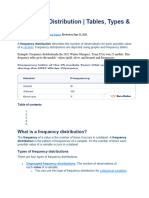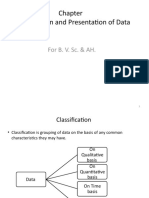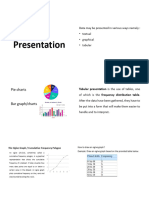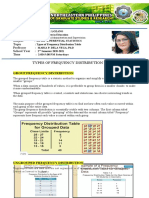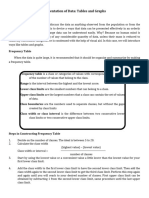0% found this document useful (0 votes)
36 views4 pagesFrequency Table in Descriptive Data Analysis
A frequency table is a fundamental tool in descriptive statistics that organizes and summarizes data by displaying individual values or grouped intervals along with their frequencies. It aids in identifying patterns and trends, serves as a basis for graphical representations, and supports various statistical calculations. The document outlines the components, creation steps, advantages, applications, and visualization methods of frequency tables.
Uploaded by
kannan.niranCopyright
© © All Rights Reserved
We take content rights seriously. If you suspect this is your content, claim it here.
Available Formats
Download as DOCX, PDF, TXT or read online on Scribd
0% found this document useful (0 votes)
36 views4 pagesFrequency Table in Descriptive Data Analysis
A frequency table is a fundamental tool in descriptive statistics that organizes and summarizes data by displaying individual values or grouped intervals along with their frequencies. It aids in identifying patterns and trends, serves as a basis for graphical representations, and supports various statistical calculations. The document outlines the components, creation steps, advantages, applications, and visualization methods of frequency tables.
Uploaded by
kannan.niranCopyright
© © All Rights Reserved
We take content rights seriously. If you suspect this is your content, claim it here.
Available Formats
Download as DOCX, PDF, TXT or read online on Scribd
/ 4
